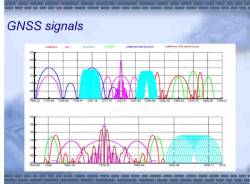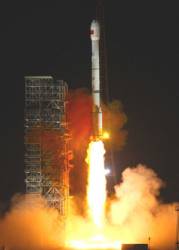 Figure 2. GNSS spectrum (after China ICG presentation)
Figure 2. GNSS spectrum (after China ICG presentation)A new Compass signal and frequency plan introduced at a recent International Committee on GNSS (ICG) working group meeting fills in some of the gaps on China’s current thinking about its GNSS system.
The presentation on the new Compass (Beidou-2) plan came at a July
30–31 workshop of the ICG Working Group A – Compatibility and
Interoperability (WG-A), in Vienna.
A new Compass signal and frequency plan introduced at a recent International Committee on GNSS (ICG) working group meeting fills in some of the gaps on China’s current thinking about its GNSS system.
The presentation on the new Compass (Beidou-2) plan came at a July
30–31 workshop of the ICG Working Group A – Compatibility and
Interoperability (WG-A), in Vienna.
China is now proposing to move its signal modulation almost entirely into the binary offset carrier (BOC) family, with an altBOC (15,10) open service (OS) signal mirroring Galileo in the aeronautical radionavigation band at E5b (centered at 1191.8 MHz). Quad phase skip keying (QPSK) signals centered at 1561 and 1589 MHz have been dropped in favor of an L1 BOC (14,2) authorized service (AS), which still overlays most of the Galileo Public Regulated Service (PRS) spectrum there.
As previously reported, the Compass open service at L1 will place a multiplex BOC (MBOC) open service atop the common GPS/Galileo MBOC signals planned there. (See Figure 1.) Figure 2 provides additional details on the data and symbol rates and pilot and data channels proposed for signals at the Compass frequencies.
In his WGA workshop presentation, Yuanxi Yang, from the China National Administration of GNSS and Applications (CNAGA), acknowledged that spectral separation between each system’s Authorized Service signals and other system’s Open Service signals “would be beneficial for all GNSS systems and users,” adding that overlapping of authorized service signals and frequencies “is unavoidable.”
Although China has yet to publish an interface control document (ICD) for Compass, Yang supported the need to publicize the signal-in-space ICDs as well as steering GNSS geodetic reference systems and time scales to a common international standard.
“Every GNSS provider should establish documented civil performance commitments to inform users about minimum levels of service when the GNSS system has the full operational capability,” he said.
Yang argued for a “quantitative evaluation of GNSS interoperability,” noting that common maximum/minimum received power levels can improve the signal-to-noise environment for multisystem receivers.





